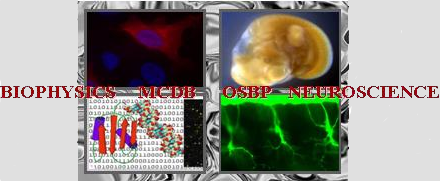Poster abstracts
Poster number 29 submitted by Salma Abdelbaky
Epigenetic deregulation of CT45A neoantigen alters the immune microenvironment and survival in AML
Salma Abdelbaky (MCDB), Anjali Byappanahalli (BSGP), Kyoko Yamaguchi (Cancer Comprehensive Center), Maria Velegraki (Pelotonia Insitute for Immuno-Oncology), Zihai Li (Pelotonia Insitute for Immuno-Oncology), Ann-Kathrin Eisfeld (OSUCCC James)
Abstract:
Acute Myeloid Leukemia (AML) is an aggressive disease with high rates of relapse and mortality. Hematopoietic stem cell transplant (HSCT) remains the only viable option for long term remission, however, HSCT recipients experience a high relapse rate. We used a comprehensive multi-omics approach integrating clinical, genetic, cytogenetic, transcriptomic, and novel epigenetic markers in a large patient cohort to identify novel pathobiological processes in AML. We uncovered an unrecognized biological signature characterized by the expression of the cancer testis (CT) antigen 45A (CT45A) that independently stratified AML patient survival. CT45A expression was restricted to a subset of patients with genome-wide DNA methylation patterns associated with KMT2A rearrangements and NPM1 mutations. CT45A expression was associated with global and promoter-specific hypomethylation and reactivated by hypomethylating agents in AML cell lines. Single cell analysis in 20 patients revealed that CT45A expression is restricted to the tumor clone and expressed across phenotypically diverse cells. Longitudinal analysis also revealed sustained CT45A expression at relapse. Analysis of the tumor immune microenvironment revealed alterations in activation and exhaustion signatures in CD8+ effector T and NK cells, marked by dysregulation of key genes such as JUND, DUSP1, GZMA, and IL32. Spectral flow cytometry analysis revealed CT45A-expressing patients display lower proportions of CD39+ TIGIT+ suppressive T cell populations and have lower Tbet and CXCR5 levels in the cytotoxic CD8+ T cells, indicating a paradoxically less exhausted phenotype. Our data support the hypothesis that CT45A behaves as a ‘fire alarm’ indicating epigenetic dysregulation in AML and functions as a neoantigen to trigger immune surveillance and elimination of tumor cells. Restricted expression in tumor cells and throughout disease course highlight the potential of CT45A as an immunotherapy target.
References:
1. Papaemmanuil E, Gerstung M, Bullinger L, et al. Genomic Classification and Prognosis in Acute Myeloid Leukemia. New England Journal of Medicine. 2016;374(23):2209-2221. doi:10.1056/NEJMoa1516192
2. Argelaguet R, Arnol D, Bredikhin D, et al. MOFA+: a statistical framework for comprehensive integration of multi-modal single-cell data. Genome Biol. 2020;21(1):111. doi:10.1186/s13059-020-02015-1
3. Giacopelli B, Wang M, Cleary A, et al. DNA methylation epitypes highlight underlying developmental and disease pathways in acute myeloid leukemia. Genome Res. 2021;31(5):747-761. doi:10.1101/gr.269233.120
4. Spencer DH, Young MA, Lamprecht TL, et al. Epigenomic analysis of the HOX gene loci reveals mechanisms that may control canonical expression patterns in AML and normal hematopoietic cells. Leukemia. 2015;29(6):1279-1289. doi:10.1038/leu.2015.6
Keywords: AML, Epigenetics, Neoantigen
